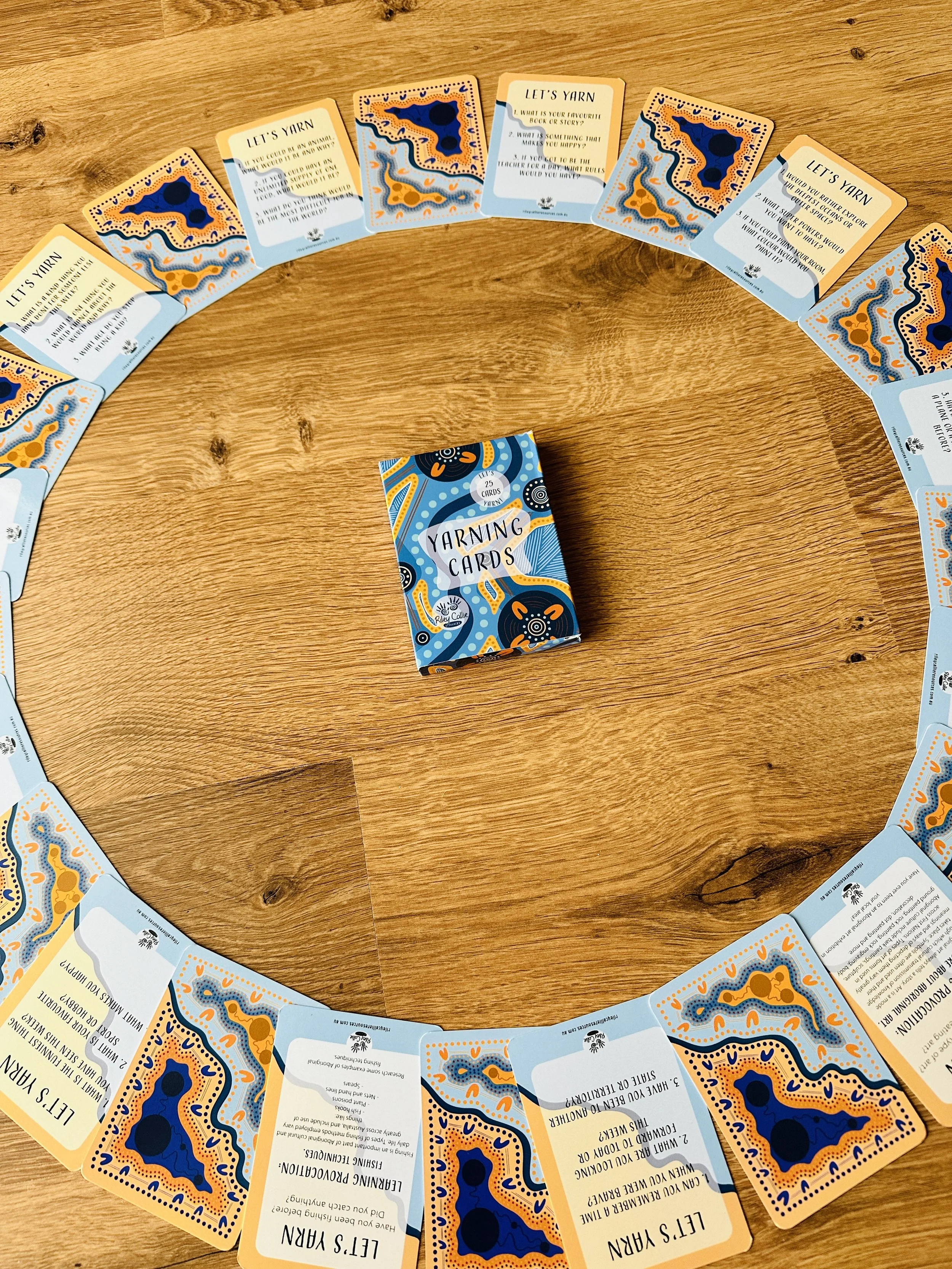Yarning Circles in the School Setting
Yarning Circles: Learning Through Storytelling and Connection
Yarning and storytelling are powerful and deeply valued ways of learning within First Nations cultures. Holding a Yarning Circle in your classroom or school is a respectful and meaningful way to embrace this cultural practice.
A yarning circle is a collaborative, inclusive, and respectful form of communication that helps to:
Encourage honest, responsible, and respectful conversations
Build trust and strong relationships among participants
Create a safe space where everyone feels heard and valued
Promote student connection with peers, school, and community
Enrich the learning experience through shared perspectives
(Source: QCAA)
What Makes a Yarning Circle Special?
Unlike traditional classroom discussions where students may feel pressure to “present” their ideas, a yarning circle invites everyone to share—not perform. It’s about listening deeply, speaking from the heart, and learning together in a way that honours everyone's voice.
Yarning circles can be used by both Indigenous and non-Indigenous students. They provide a space for children to express thoughts, share stories, and explore ideas collectively. They’re also a gentle, inclusive way to support social-emotional wellbeing, allowing students to raise concerns, talk about their feelings, or work through challenges.
By gathering in a circle—rather than in rows or at desks—the usual power dynamics between teacher and student begin to shift. Everyone is on equal ground, which can help quieter students feel more confident and empowered to speak up.
A yarning circle is more than a conversation—it's a practice of respect, connection, and deep listening. Incorporating this into your school setting supports a more inclusive and culturally responsive learning environment for all.
Further Resources:
Junior Landcare on Yarning Circles in Schools
Wingaru Tips for a Successful Yarning circle
8 Ways Online


